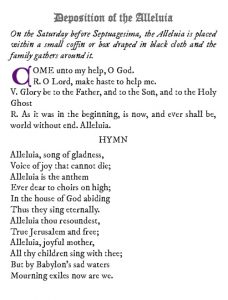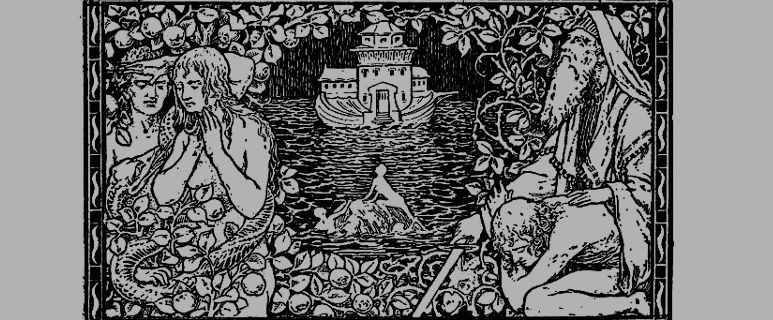
The Forgotten Liturgical Season of Septuagesima
The liturgical season of Septuagesima was unfortunately suppressed in 1970, but it is still observed in some places and has some wonderful folklore associated with it.
Also called Pre-Lent, it began on Septuagesima Sunday, the third Sunday before Ash Wednesday, and also included the two following Sundays of Sexagesima and Quinquagesima.
It was a lightly penitential season where the liturgical color turned to violet and the Alleluia was omitted at Mass and during the Divine Office. Yet fasting and penance had not yet begun, giving the Catholic faithful a way to gradually ease into the austerity of Lent without experiencing it all at once, as is currently the case with Ash Wednesday.
In fact, the last three days of Septuagesima were fixed in the popular imagination as a subseason of their own, variously called Shrovetide, Carnival, and other names. Those days were regarding as a last celebration before Lent, and as a result they took on very colorful names in folklore like Pancake Monday and Fat Tuesday (Mardi Gras)–named for the foods that would be used up before the fast began.

The beginning of the season had its characteristic practices as well, most notably the burying of the Alleluia. On the Saturday before Septuagesima Sunday in some monasteries and elsewhere, Alleluias would be sung repeatedly by way of farewell, while a coffin containing the word would be closed and buried, not to be opened again until Easter.
In the readings of the Divine Office, (or Liturgy of the Hours as it is now called), the season began at the very beginning of the Bible, with the creation of the world, Adam and Eve and the Fall. The story of Noah would be introduced at Sexagesima, and Abraham and the sacrifice of Isaac would be featured at Quinquagesima.

This recounting of the earliest stories of the Bible sets up the whole season of Lent, reminding us of why we needed Christ’s redemption. These readings will reappear at the first three prophecies of the Easter Vigil, bringing the entire story of salvation full-circle.
Although most Catholics are no longer familiar with these wonderful customs, they are still kept up in traditional parishes and have even started to make a comeback in liturgies such as that of the Ordinariate.
And of course Catholics are perfectly free to revive these practices in their devotional lives as well, thus giving additional meaning and color to the Lenten season.